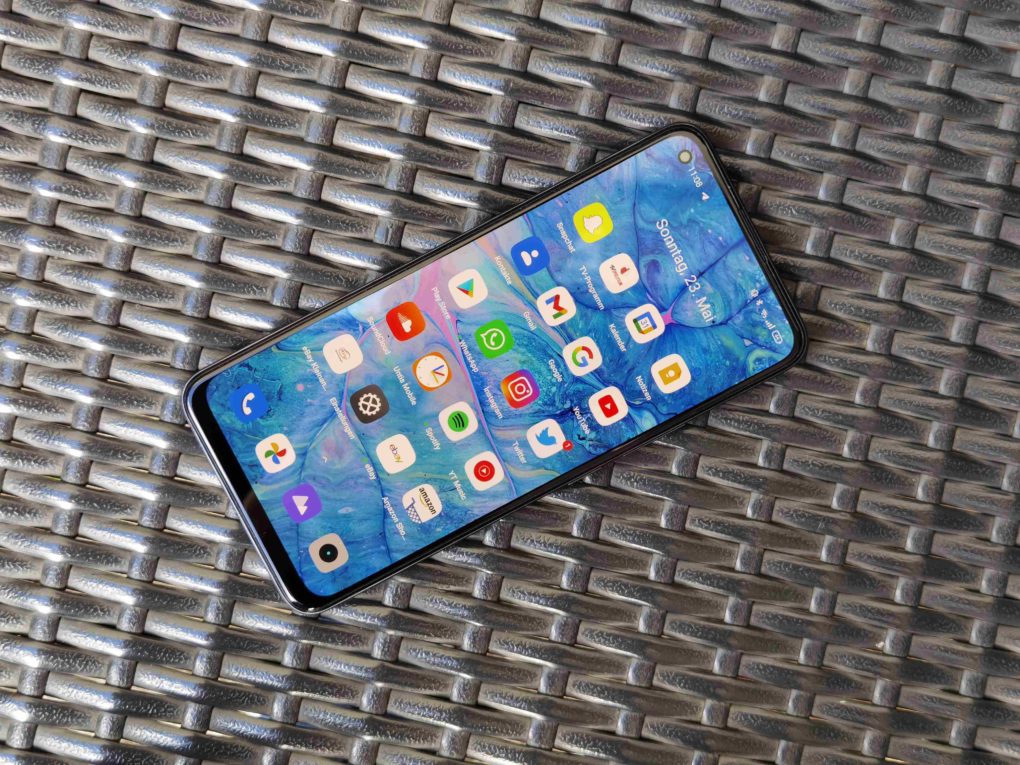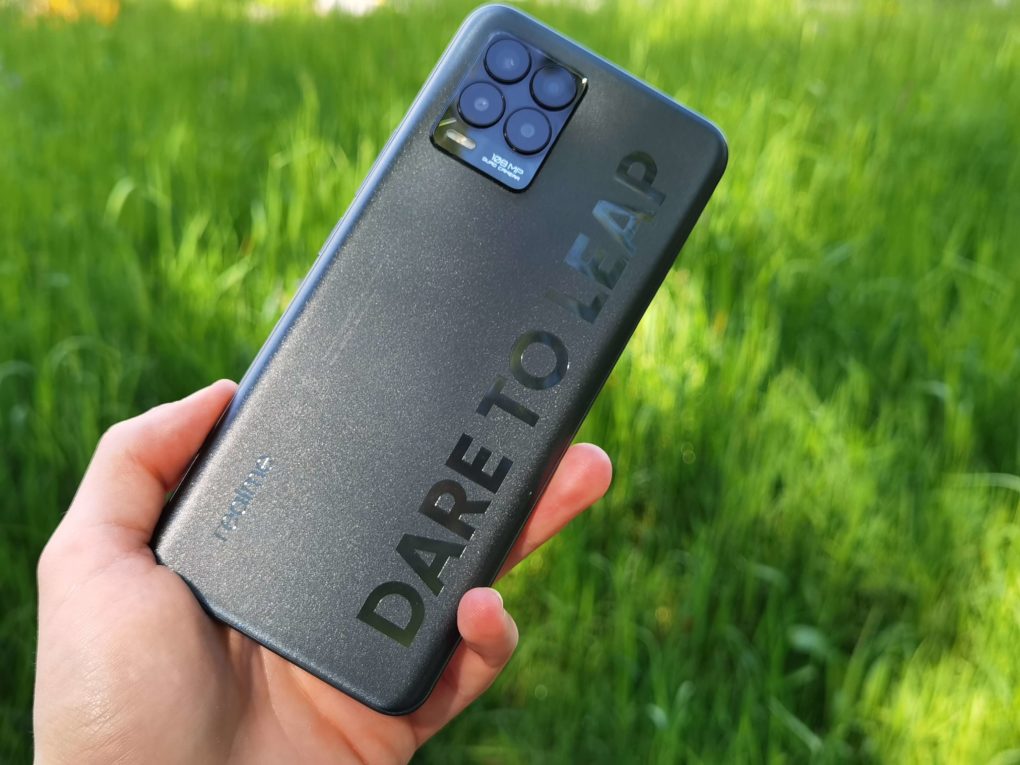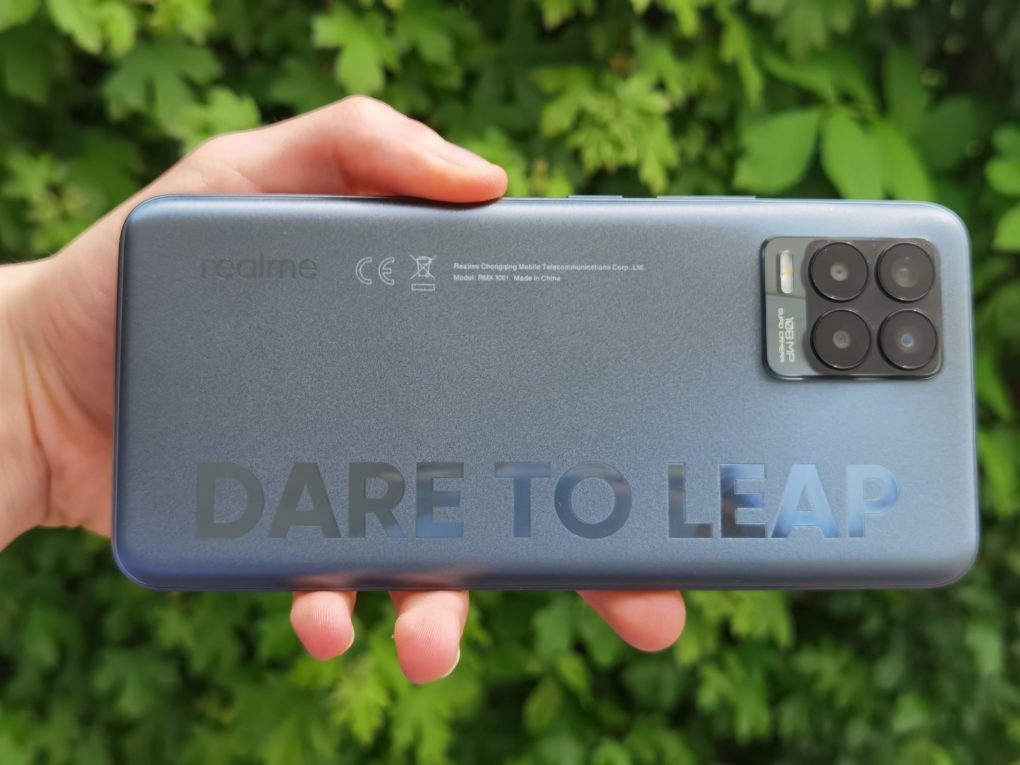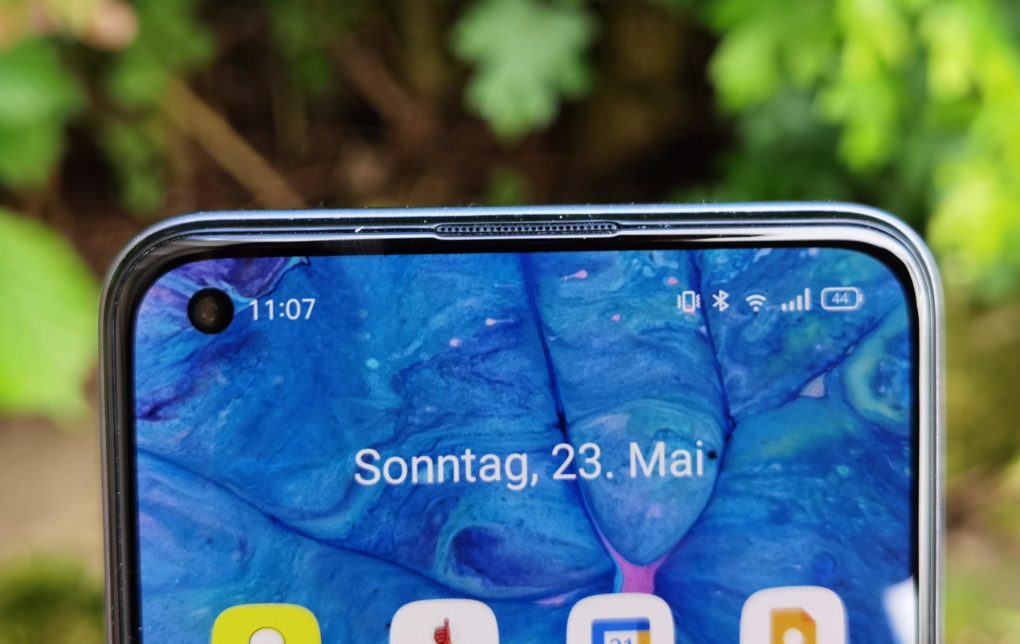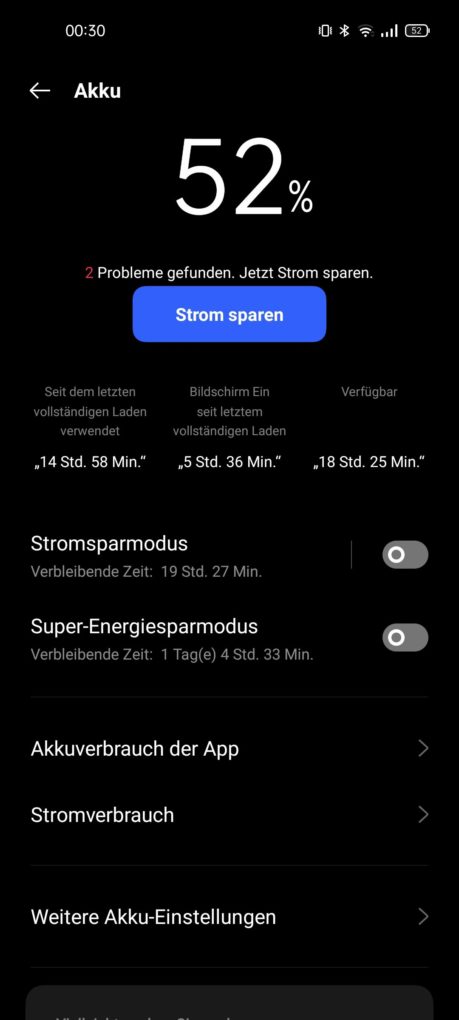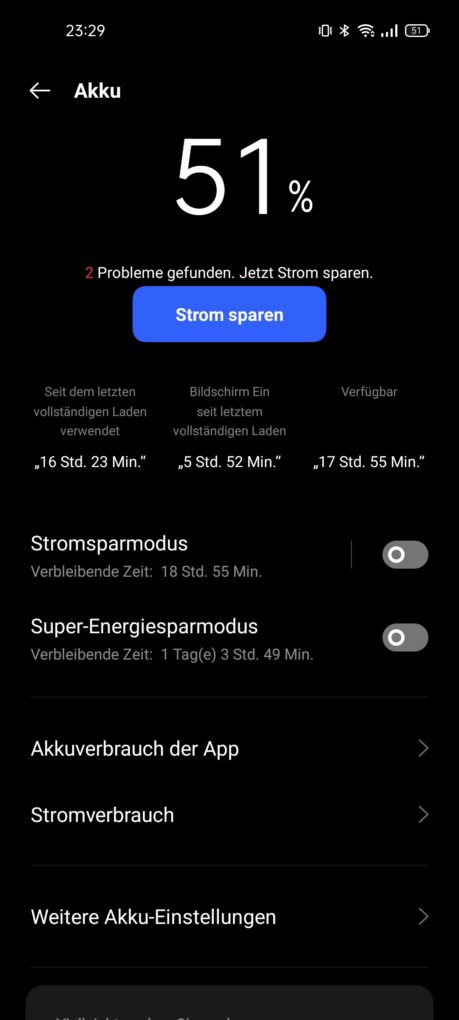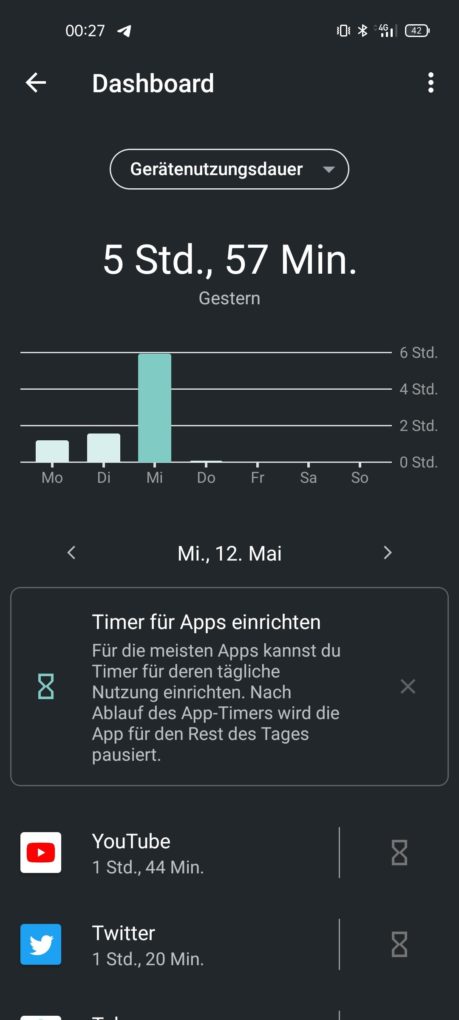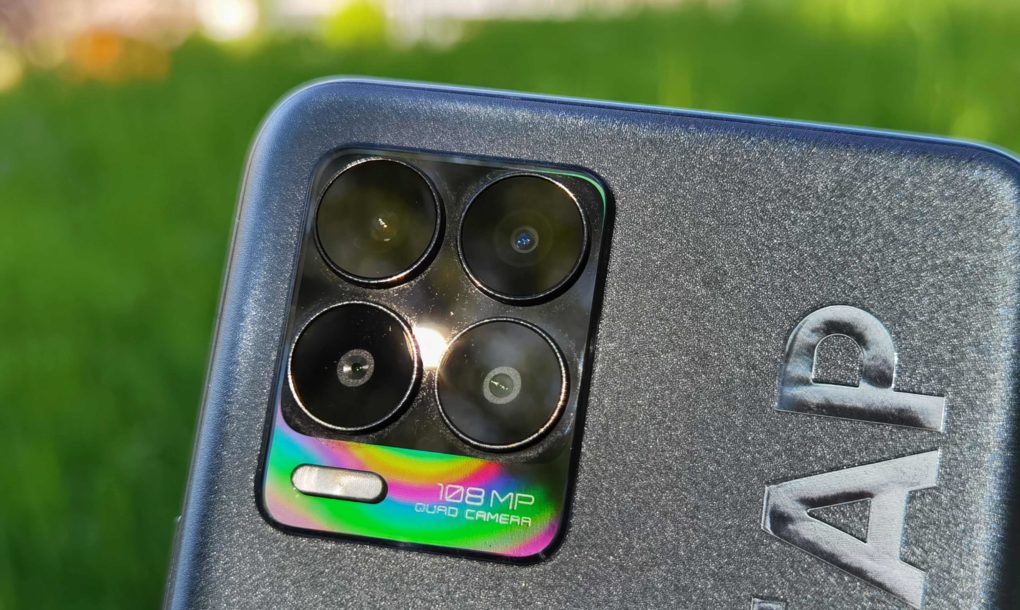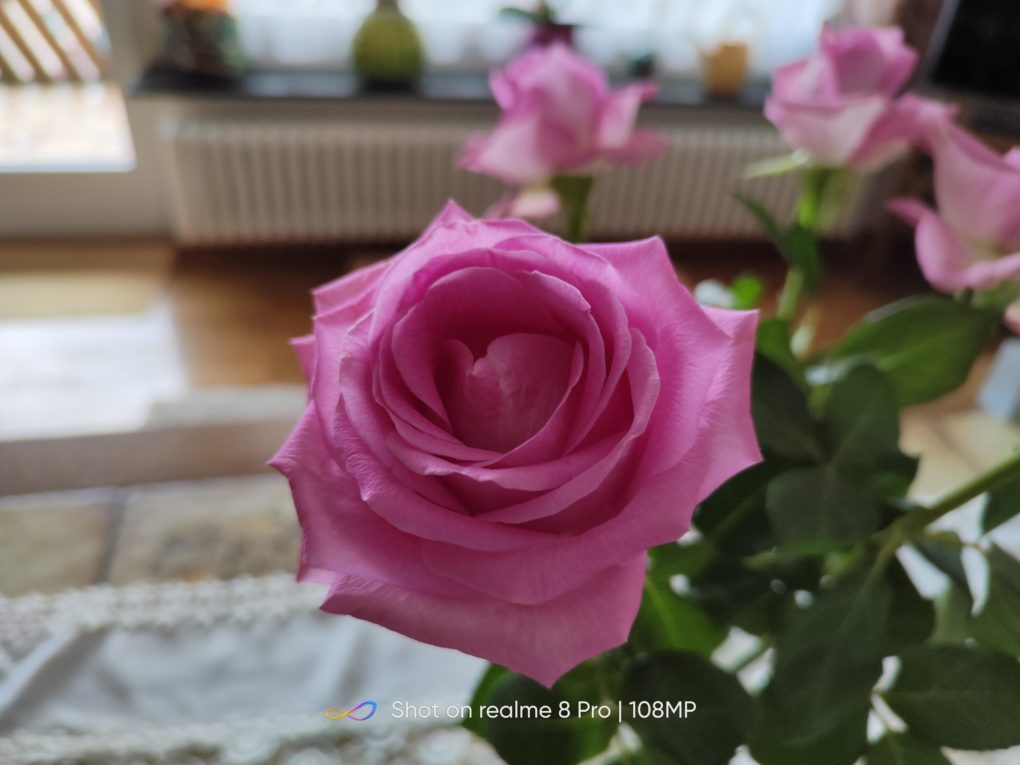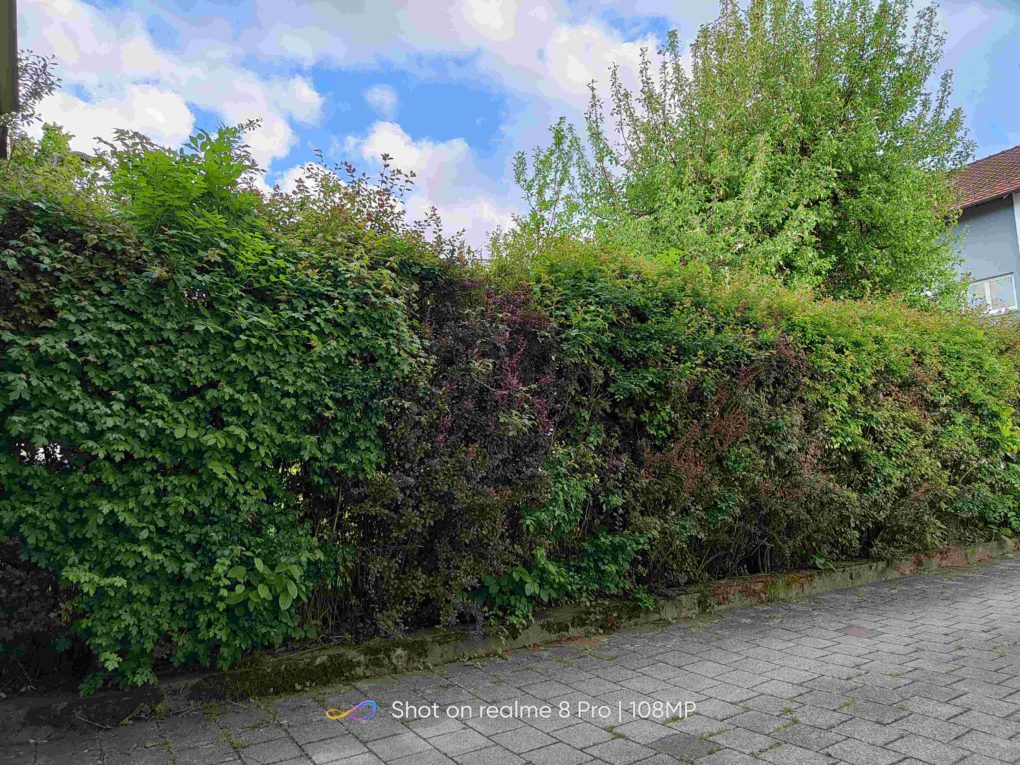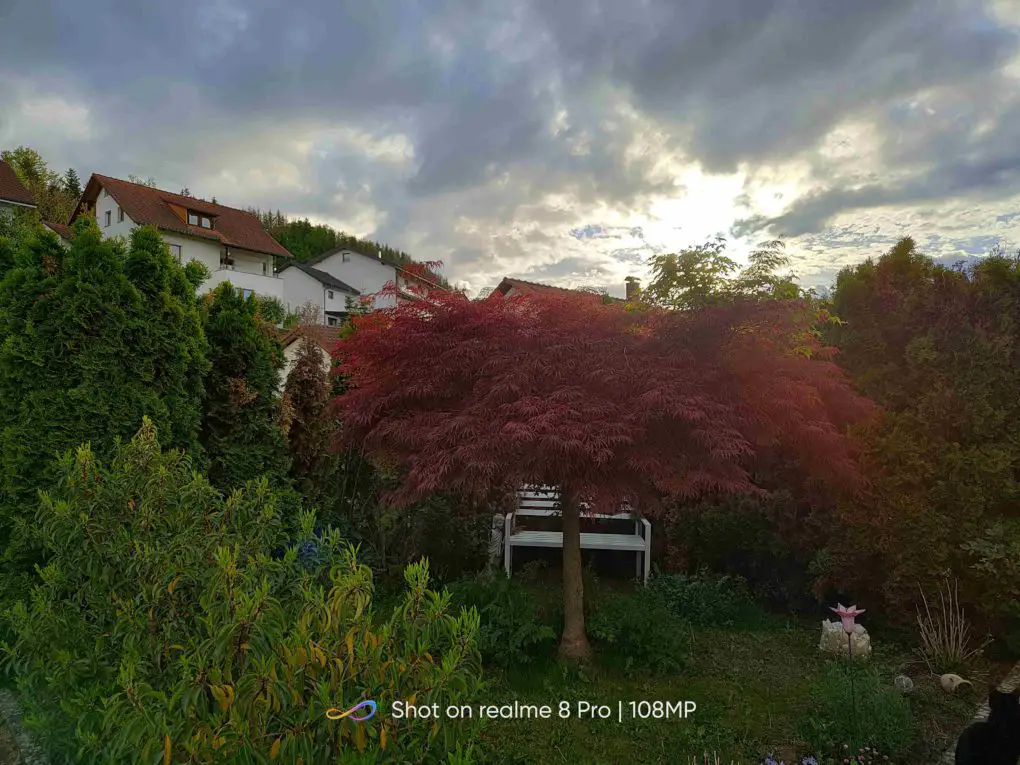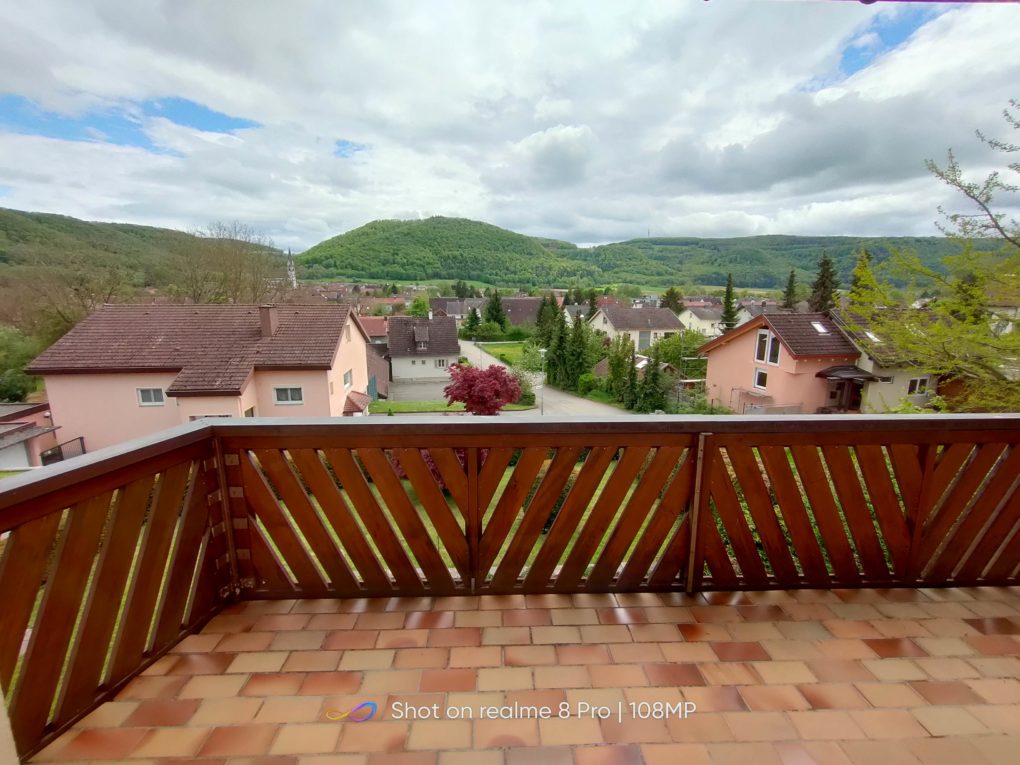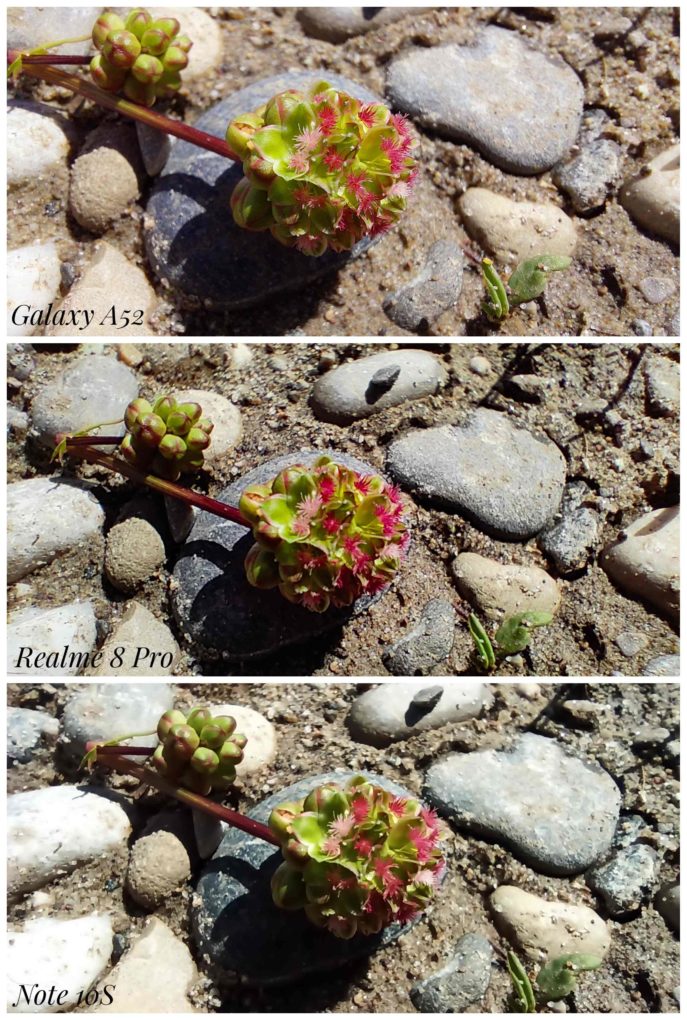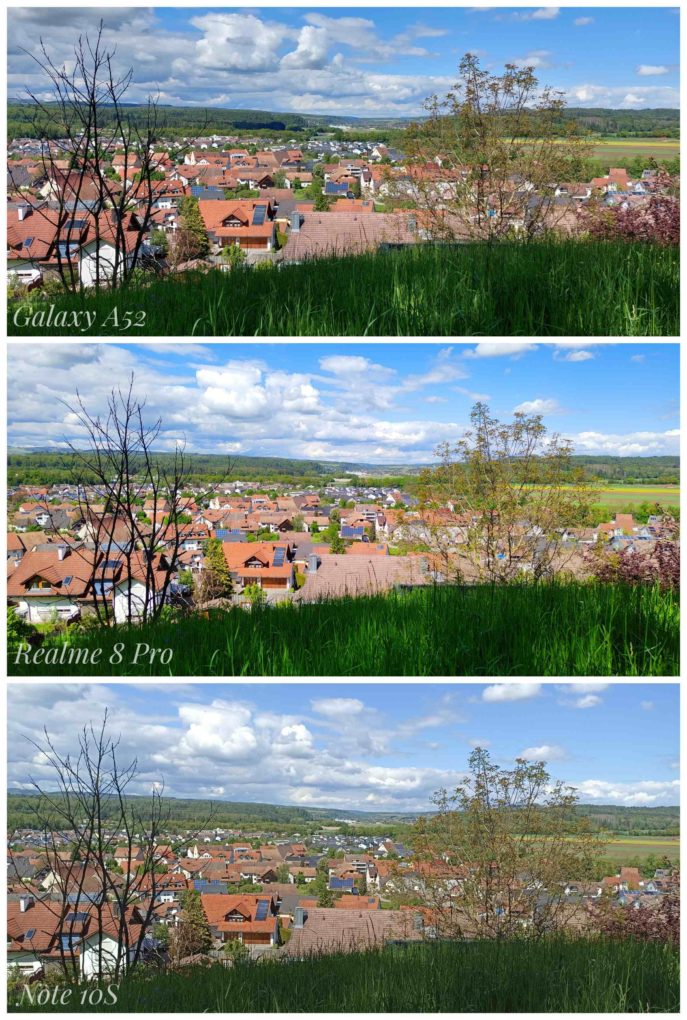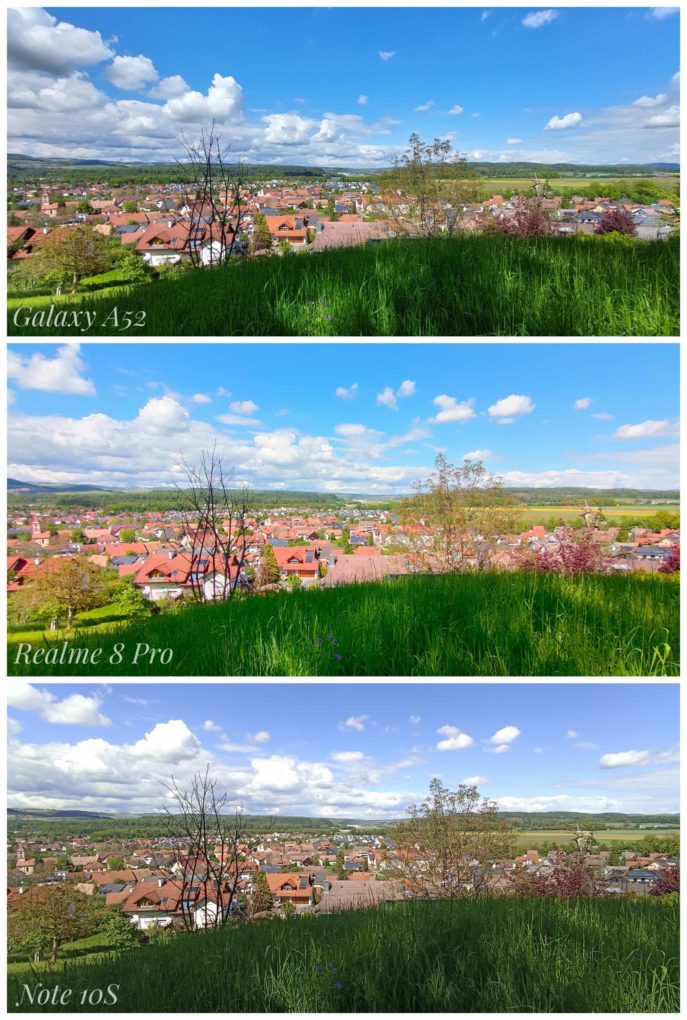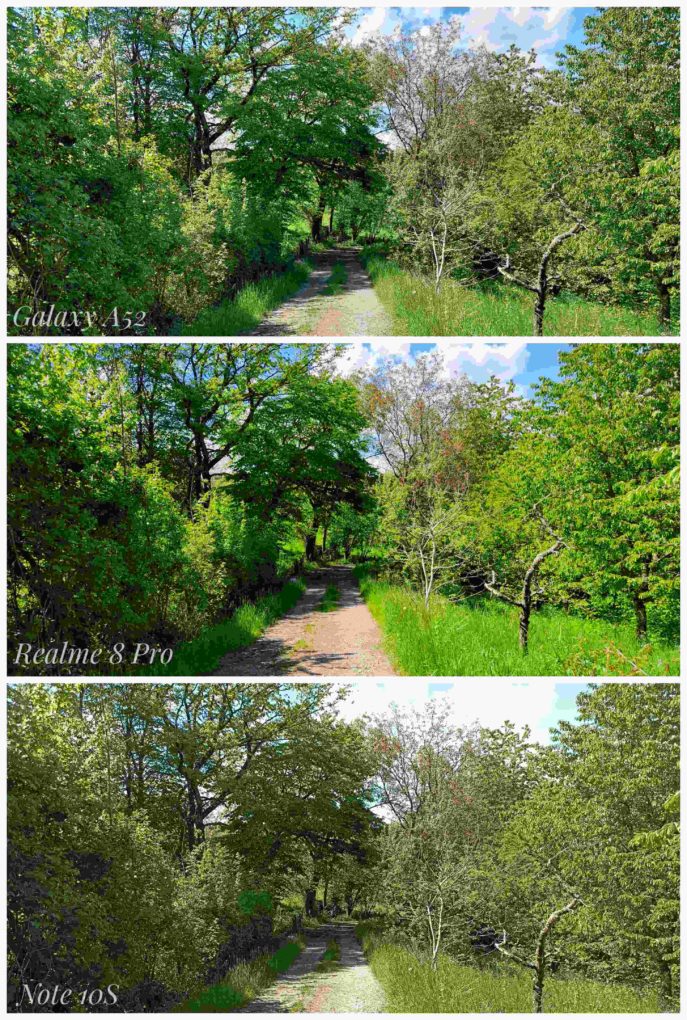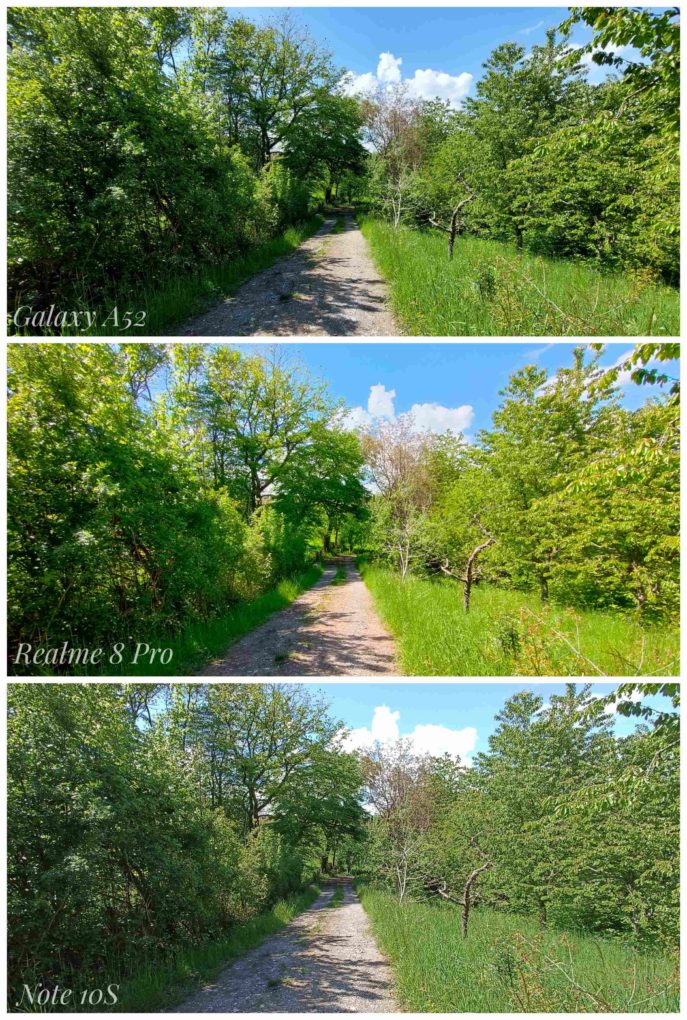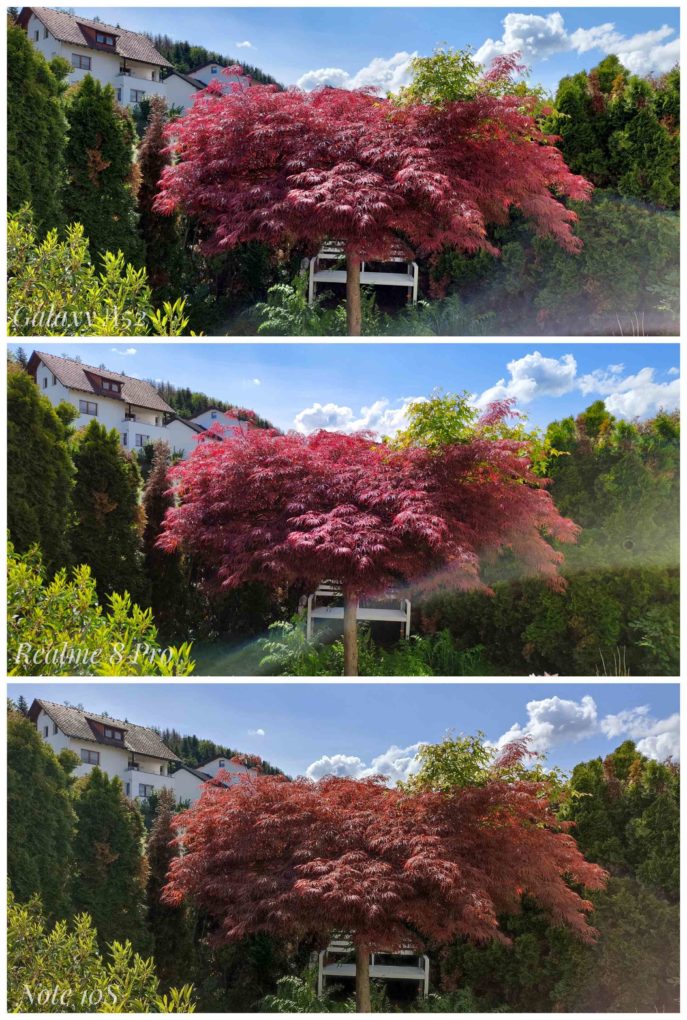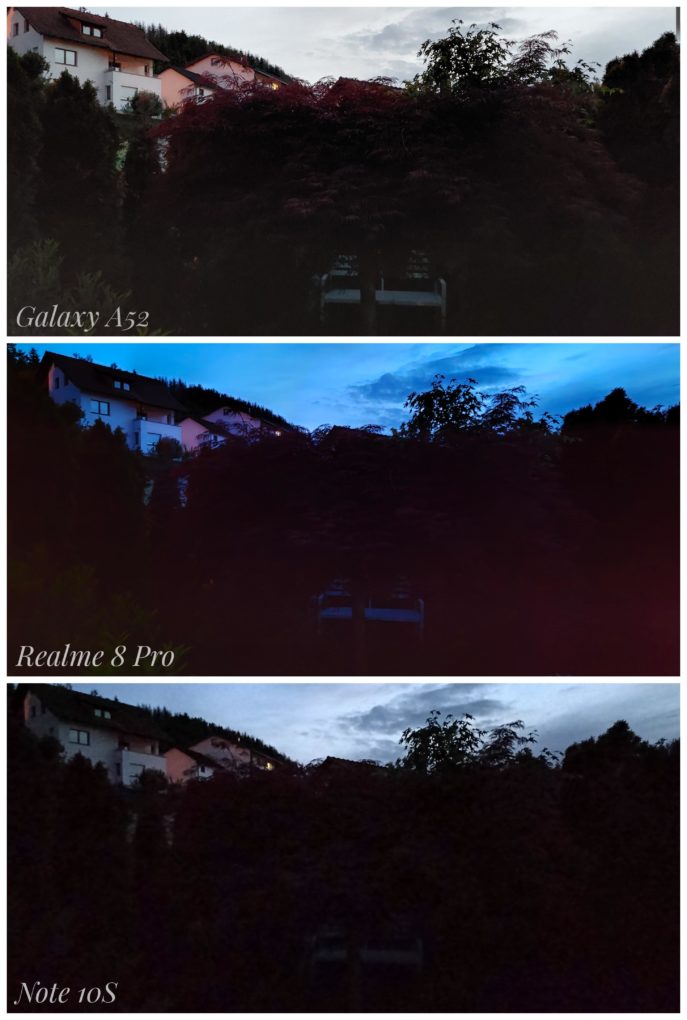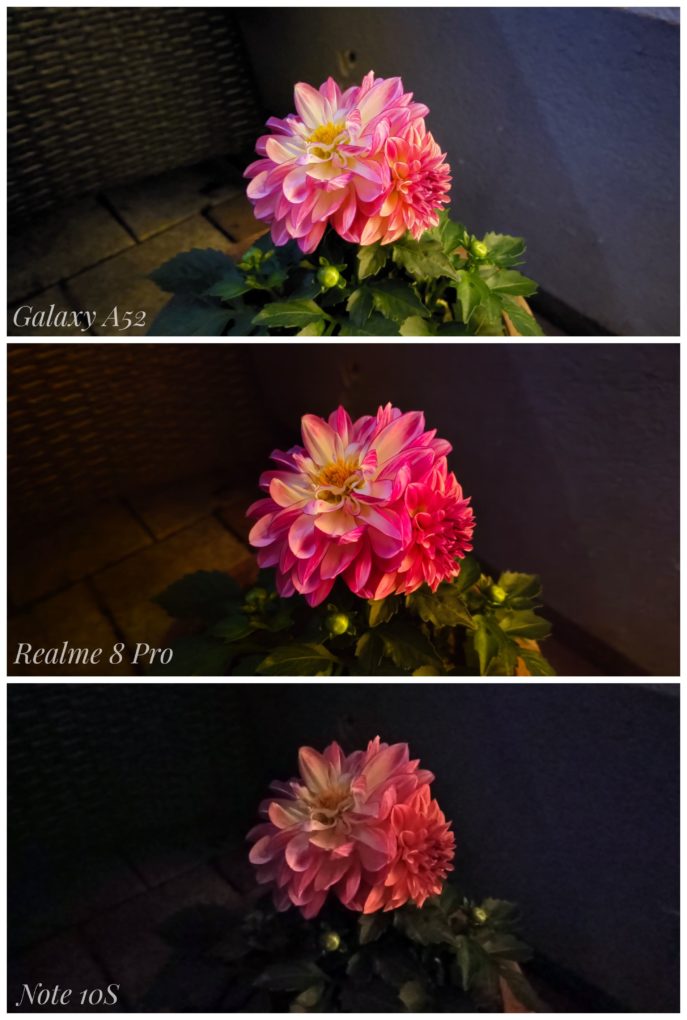Realm 8 Pro review: No major weaknesses for currently 265 euros
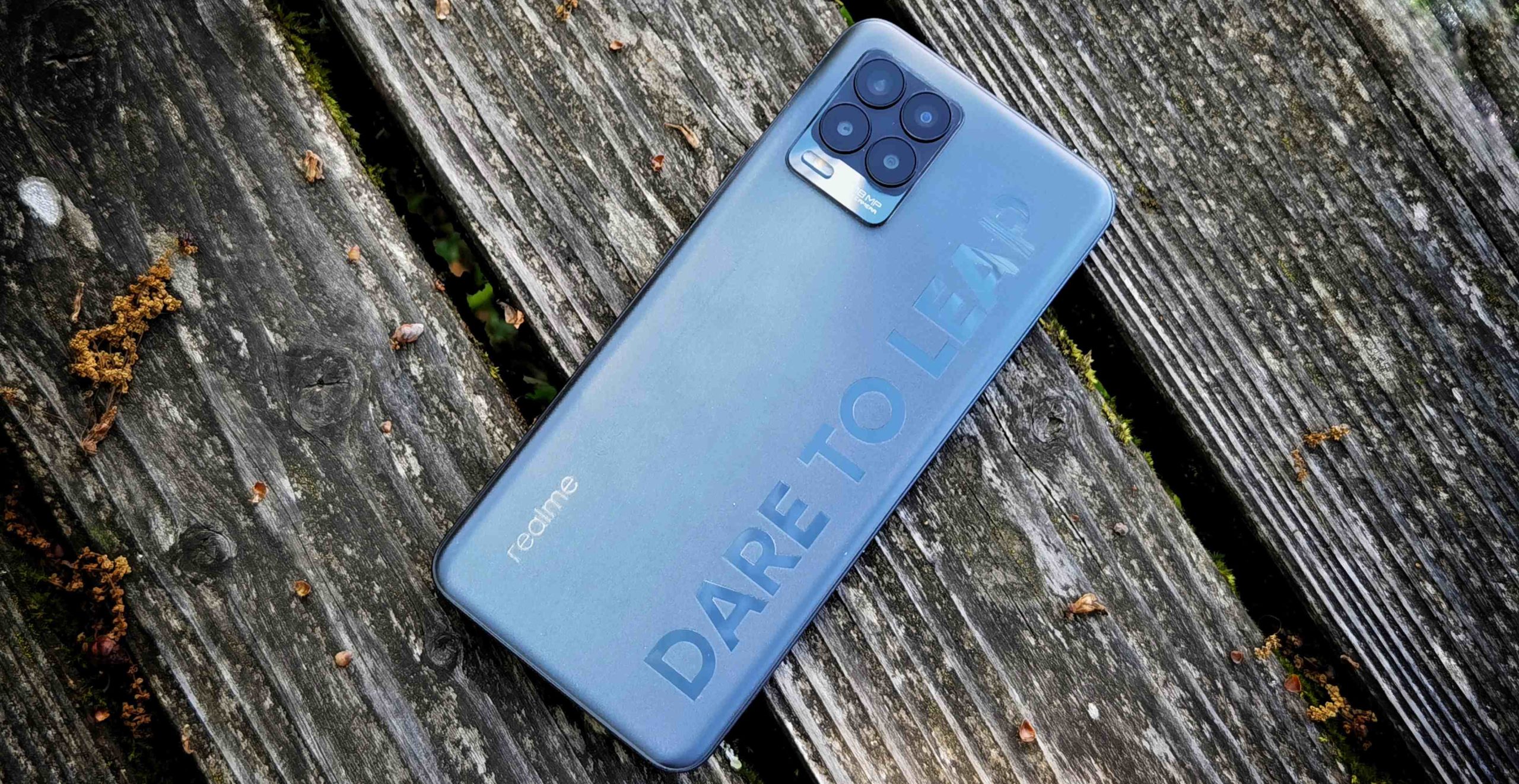
Xiaomi currently dominates the price range from 200 to 350 euros by presenting new and sometimes really good smartphones every week. The competition doesn't stand a chance there, does it? At least one smartphone in this price range, namely the Realme 8 Pro, stood out positively in the last few weeks and on paper can keep up with Xiaomi in many respects.
It started with a recommended retail price of 279 euros and is now available for around 265 euros. For this price, customers get, for example, a high-quality OLED display, a 4.500 mAh battery with 50 watt fast charge, a 108 megapixel main camera and expandable memory. Only when installed Proprocessor and the refresh rate of the screen, you have to make slight compromises on paper. In the following lines you can find out how the smartphone fared in everyday life, whether I can recommend it or whether Realme doesn't stand a chance against Xiaomi in this price range.
Jump to section
- 1 Haptics, design and processing
- 2 Display - really strong, but ...
- 3 Software - many personalizations
- 4 Performance - constant and fluid
- 5 Battery - very good runtimes, even better charging times
- 6 Camera - good, but nothing more
- 7 Others - Solid speaker, good fingerprint sensor, etc.
- 8 Conclusion
- 9 Realm 8 Pro buy
Haptics, design and processing
With dimensions of 160,6 mm in height and 73,9 mm in width, the Realme 8 belongs Pro by today's standards neither to the larger nor to the smaller smartphones. It fits perfectly in the hand and can also be operated with one hand, which is due to the pleasant weight of only 176 grams and the thickness of only 8,1 mm on the one hand, but also to the perfectly rounded edges on the other.
The back is made of matt plastic, which is absolutely immune to fingerprints due to its extremely rough surface, at least on the iinfinite Black Colour. Customers still have the choice between two other colors, namely infinite blue and Punk Black. The latter is unfortunately glossy and should therefore be much more susceptible to fingerprints.
What immediately catches the eye on the back is the huge one Dare to Leap Lettering. Personally, I don't think much of it, but I also have to say that it in no way destroys the design of the back. If you like it a little more subtle, you should probably go for the color Black Punk grip, the back of which does not show any lettering. The quad camera is housed in the top left and protrudes clearly from the housing, causing the smartphone to wobble slightly when it is on the table when operated. If we look at the front, we see a familiar picture from the middle class. The edges around the panel are very thin on three of four sides and the front camera sits in the form of a small punch hole in the left corner.
There is absolutely nothing to complain about in terms of workmanship for the price. The keys sit tight in the case and have a decent pressure point. In addition, the case does not creak like some other devices and the back cannot be dented.
- The lower edge of the screen could be a little thinner. (Picture: TechnikNews)
- The color "infinite black" is extremely immune to fingerprints. (Picture: TechnikNews)
- The lettering on the back is quite noticeable. (Picture: TechnikNews)
Display - really strong, but ...
The Chinese manufacturer has installed a 6,4-inch OLED display, which is only interrupted by a small punch hole in which the front camera is located. The panel has a pleasantly sharp resolution of 2.400 x 1.080 pixels and supports a refresh rate of 60 Hertz. For the offered price of well under 300 euros this is still completely okay in my opinion, but the slightly more expensive one Redmi Note 10 Pro already supports 120 Hertz with OLED. That is a bit of a shame, but the smartphone currently costs around 265 euros and for this price you simply cannot expect a 120 Hertz OLED panel everywhere, especially because there are certain smartphones for over 1.000 euros that only run at 60 Hertz come along.
The remaining points, i.e. the color reproduction, contrast value, black value, brightness and viewing angle are excellent and significantly better than the LC displays of the competition. Even on sunny days I never had bigger ones Proproblems with readability. Sure, especially on this point, flagships are a step further, but you can also get there with the brightness of the Realme 8 Pro great right. The color reproduction is excellent and beautifully realistic, at least in the "Mild" screen color mode. If you like it a little more colourful, you can adjust the color rendering to your own taste in the settings with just a few clicks. Even the viewing angle stability is really good. The colors only change color slightly from extreme viewing angles.
Software - many personalizations
The in-house Realme UI, based on Android 11, is used as software. It's quite colorful and sometimes a bit confusing, especially the settings. But some things can be adjusted according to your own taste. For example, you can change the colors of the UI, the icon style of the apps or the animation when unlocking via the fingerprint sensor. There is also an excellent night mode, which works great with almost all apps, and ingenious gesture control. However, I would still like to see a quick start function for starting the camera in the future.
Performance - constant and fluid
Under the hood is the Snapdragon 720G from Qualcomm, which we for example from the Galaxy A52 and A72 know, but also from the predecessor, the Realme 7 Pro. The Prozessor is supported by either 6 or 8 GB of RAM with 128 GB of internal memory, which can be expanded using a microSD card.
I would like something a little stronger Processor, especially because the predecessor was also equipped with the 720G and some of the competition, such as this Little X3 Pro, is a step ahead here, but the everyday performance is right. Apps start and close fairly quickly and the Realme 8 runs overall Pro very fluid and above all constant. While the Galaxy A52 does the same Prozessor allows for smaller commemorative breaks from time to time, everything runs pretty consistently at Realme. You can also gamble, but the smartphone already reaches its limits in some cases, especially with more complex games. If you value this, you should probably go to the Poco X3 Pro grab or spend some more money for one Poco F3 take in hand. The processing of night shots or the installation of some apps also sometimes takes a little longer than usual.
Battery - very good runtimes, even better charging times
The battery has a capacity of 4.500 mAh and can be quickly charged with up to 65 watts with the 50 watt power supply provided, which is anything but a matter of course in this price range. It takes about 50 minutes for the battery to be fully charged.
I always came protrouble-free through a day and even 1,5 to 2 days were possible. At the end of the day, with a screen-on-time of 6 hours, I usually still had 40 to 50 Procent battery left. Those are really strong values. With the Realme 8 Pro so nobody should Prohave trouble getting through a day without a charge.
- Screenshot: TechnikNews
- Screenshot: TechnikNews
- Screenshot: TechnikNews
Camera - good, but nothing more
The highlight should clearly be the camera, because Realme installs a 300 megapixel main sensor for less than 108 euros, which is clearly superior to almost all others in this price range in terms of sensor size. The number of pixels is negligible. It doesn't necessarily have to be that more megapixels automatically lead to better image quality. In addition, there is an ultra-wide-angle camera with 8 megapixels, which can capture a fairly large image section due to its large viewing angle. There are also two sensors for macro shots and depth effects, each with a resolution of 2 megapixels. The front camera has a resolution of 16 megapixels.
With the main camera, especially in good lighting conditions, you can take very good pictures, which can be characterized by a decent image sharpness and a good dynamic range. There is only room for improvement in terms of color rendering. Almost all of the images look much too saturated, even though the AI mode was always deactivated. However, if you like strong colors in your pictures, you will get your money's worth here.
As soon as the lighting conditions become more difficult, the night mode is used, which ensures significantly sharper and slightly brighter images. Especially here I would have expected a little more due to the sensor size. Even cheaper smartphones sometimes take brighter pictures, but in return cannot keep up with the sharpness. In total, the Realme has 8 Pro a good main camera for currently 265 euros, which is also better than the competition in many situations, but in some points, such as the low light performance or the color reproduction, I would have expected a little more.
The quality of the ultra-wide-angle camera is then again quite unspectacular and exactly as we see it from almost all other smartphones in this price range. In good lighting conditions it definitely offers added value, but as soon as the lighting conditions are only slightly worse, the pictures are no longer really useful.
Macro shots are rather useless because they are reproduced pale and far too blurred. I recommend using the main camera and then cropping into the image. I liked the front camera a lot better, which shoots sufficiently sharp and color-accurate images.
Test photos
Let's take a look at a few test photos. As always, the following images are absolutely unprocessed, but compressed without loss in order to keep the loading times and memory consumption of the website low.
- The macro camera is not really useful. For this you should rather use the main camera. (Picture: TechnikNews)
- The bokeh is very pronounced due to the huge sensor. (Picture: TechnikNews)
- The main camera sometimes exaggerates the saturation. (Picture: TechnikNews)
- The dynamic range is quite impressive. (Picture: TechnikNews)
- The ultra-wide-angle camera can still be used in good lighting conditions, even if there are blurred areas, especially at the edge areas. (Picture: TechnikNews)
Comparison with the Samsung Galaxy A52 and Redmi Note 10S
Last but not least, we want to compare the camera with the competition in various situations. This is what the Galaxy A52 from Samsung and the Note 10S from Redmi on. I made a conscious decision in favor of these devices because they are in a similar price range. The Redmi is currently slightly cheaper and the A52 a bit more expensive.
- The Galaxy A52 succeeds in macro shots much better. The recordings become sharper and more accurate in terms of color. (Picture: TechnikNews)
- Redmi makes the most natural picture. The realme exaggerates the saturation and the picture is slightly overexposed. (Picture: TechnikNews)
- Samsung takes the sharpest pictures with the ultra-wide-angle camera. (Picture: TechnikNews)
- This is where the Realme 8 cuts Pro from the sharpness even worst off. (Picture: TechnikNews)
- Samsung is once again slightly ahead of the field when it comes to ultra-wide-angle cameras. (Picture: TechnikNews)
- For me, the Redmi Note 10S just wins here. Realme and Samsung slightly overdo it with saturation and unfortunately have lens flare. (Picture: TechnikNews)
- Samsung makes the brightest and sharpest picture. Realme goes overboard with the colors completely. (Picture: TechnikNews)
- Samsung makes the slightly brighter picture again. The sharpness can also convince with the Realme this time and the Redmi can no longer keep up. (Picture: TechnikNews)
For macro shots, the Realme 8 Pro clearly beat the A52. In return, the main camera can actually convince across the board in good lighting conditions. The image sharpness and the dynamic range are really impressive, although Samsung can keep up very well here and is even a little better in some cases. Despite deactivated scene optimization, the Realme delivers the most unrealistic shots. The Redmi is convincing across the board here and delivers the most natural colors. In low light, the Galaxy A52 wins for me because of its good brightness, decent sharpness and realistic colors. Realme sometimes takes a bit sharper pictures, but it also overdoes it here with the saturation and reproduces pictures a bit too dark despite the night mode.
Others - Solid speaker, good fingerprint sensor, etc.
Unfortunately, the Realme 8 Pro only one mono speaker is used on the underside, which can be easily covered. But the quality can definitely convince. It gets sufficiently loud and delivers a solid, clear sound. The sound is only less good at higher volumes.
The built-in vibration motor is average. It doesn't convey a high-quality feeling and doesn't sound particularly good either, but I've already seen worse in this price range. The fingerprint sensor in the display was much better. It could be positioned a little higher for my taste, but both the speed and the reliability are quite impressive.
Finally, I would like to mention that the Realme 8 Pro has a triple slot. So users can use the memory proEasily expand via a microSD card and have two SIM cards in use at the same time. With many other smartphones, you either have to choose between two SIM cards or microSD.
Conclusion
The Realme 8 Pro offers a very strong overall package without major weaknesses for currently 265 euros. Above all, the display and the battery life, but also the main camera and the performance are convincing. Nevertheless, the Chinese manufacturer has a hard time, because Xiaomi currently dominates the price range from 200 to 350 euros like no other. A Poco X3 Pro only has an LC display, 33 watt fast charge and a worse camera on paper, but offers a much stronger and above all future-proof one Proprocessor. Those who attach great importance to this should probably use this smartphone.
But if the display is very important to you, you should go for the Realme, right? Probably not, because the display of the Realme 8 is so good Pro Also, there is an even better alternative, namely the Redmi Note 10 Pro. This not only supports an OLED panel, but also a smooth refresh rate of 120 Hertz.
However, if you don't like the software from Xiaomi or the design of the smartphones, you can go to the Realme 8 Pro grab and will be very happy with it. Otherwise you can also wait a few weeks or months until the price drops even further and then it gets really interesting.
We would like to thank Realme Germany for providing the 8 Pro!

